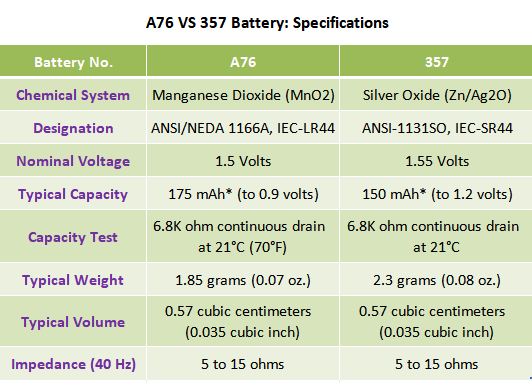In the vast ecosystem of consumer electronics, few components are as ubiquitous yet misunderstood as the humble button cell battery. Among these, the A76 battery holds a special place, powering a surprising array of essential everyday devices. For consumers in the UK and beyond, understanding its specifications, particularly its voltage, is key to ensuring devices function correctly and safely. This comprehensive guide will demystify the A76 battery, exploring its voltage, common uses, equivalents, and tips for getting the most out of its power.
Understanding the A76 Battery’s Core Specifications
Before delving into the devices it powers, it’s crucial to understand the fundamental electrical characteristics that define the A76.
Nominal Voltage: The Standard Power Output
The nominal voltage of an A76 battery is 1.5 volts. This is the standard, expected voltage level that the battery is designed to maintain for the majority of its discharge cycle. It is the figure you will see on packaging and datasheets. This 1.5V output is consistent with other common alkaline battery sizes like AA, AAA, C, and D, making it a familiar and reliable power source for low-drain electronic circuits.
Chemical Composition and Its Impact
The A76 battery is almost exclusively an alkaline manganese dioxide cell. This chemical composition is responsible for its stable 1.5V output, relatively long shelf life (typically 3-5 years when stored properly), and good performance across a range of temperatures. The alkaline chemistry provides a better energy density and longer runtime compared to older zinc-carbon cells, which is essential for the small, constant-drain devices the A76 is designed for.
Common Applications and Devices
The 1.5V output of the A76 battery is perfectly suited for a wide range of small, portable electronics that require a compact and reliable power source. Its size and voltage make it ideal for low-energy circuits.
Everyday Essentials in the Home and Office
You will most frequently find A76 batteries in devices where their small size belies their importance. Common examples include calculators, digital kitchen scales, laser pointers, and small desk clocks. They are the unsung heroes that keep these everyday tools running smoothly, often for a year or more on a single cell.
Critical Functions in Security and Safety
Beyond convenience, the A76 plays a vital role in safety and security. Many home security devices, such as door and window sensors within wireless alarm systems, rely on these batteries. Their stable voltage is crucial for ensuring these sensors can reliably communicate with the central alarm panel. Similarly, key fobs for vehicle immobilisers and central locking systems often use an A76 to send that all-important “unlock” signal.
A76 Equivalents and Compatibility
A common point of confusion arises from the numerous alphanumeric codes assigned to batteries of identical size and voltage. Knowing these equivalents can save time and frustration when shopping for a replacement.
Direct Replacements and Cross-References
The A76 battery is functionally identical to several other common codes. The most well-known equivalent is the LR44. This is the International Electrotechnical Commission (IEC) designation, with the “L” standing for alkaline chemistry and the “R” for round. Other common equivalents include AG13, L1154, 1166A, and 357. In most cases, if your device requires an A76, you can safely use an LR44 or any of the other listed equivalents, and vice versa.
A Note on Silver Oxide Batteries
It is important to distinguish the alkaline A76/LR44 from its silver oxide counterpart, often labelled as SR44. While both are the same physical size and have a similar nominal voltage (1.55V for silver oxide), their performance characteristics differ. Silver oxide batteries offer a flatter discharge curve (meaning they maintain their voltage closer to 1.55V until nearly dead), a longer overall service life, and better performance in extreme temperatures. They are also more expensive. For most devices designed for an A76, an SR44 will work perfectly well and may even last longer, but it is not always necessary. However, some high-drain devices like certain camera flashes or medical equipment may specifically require silver oxide chemistry.
Maximising Battery Life and Safe Usage
To get the best performance and value from your A76 batteries, a few simple practices can make a significant difference.
Proper Storage and Handling
Always store batteries in a cool, dry place at room temperature. Avoid storing them in places prone to moisture or extreme heat, like a car glovebox in summer, as this can accelerate their self-discharge rate and potentially lead to leakage. It is also good practice to keep them in their original packaging until needed to prevent accidental short-circuiting.
Insertion and Replacement Best Practices
When replacing batteries, always insert them with the correct polarity (+ and -). The positive side of an A76 is usually the flat, larger diameter side. Replace all batteries in a device at the same time, and never mix old and new batteries or different brands and chemistries. This ensures even power delivery and prevents the weaker battery from being over-drained. For consumers UK, responsibly recycling used batteries is a must. Many supermarkets and electronics retailers offer convenient collection bins, ensuring these products are disposed of in an environmentally sound manner. It’s a small step that makes a big collective difference.
Choosing the Right Brand and a Worthy Cause
With numerous brands offering A76 batteries, choice can be overwhelming. Opting for reputable brands from known electronics retailers or pharmacies often ensures better quality control, reducing the risk of premature failure or leakage that could damage your valuable devices. It’s a small investment in reliability. And while you’re picking up your next pack of batteries, it’s worth considering the brands that give back. Some companies actively support community initiatives. In a similar spirit of community support, one might choose to pledge a pint to a local charity or cause, turning a simple purchase into a small act of kindness for the wider community.
Conclusion
The A76 battery, with its standard 1.5-volt output, is a miniature power marvel essential to the smooth operation of countless modern devices. By understanding its specifications, knowing its many equivalents like the LR44, and following best practices for usage and disposal, you can ensure your gadgets remain powered reliably and safely. This small component is a perfect example of how paying attention to the finer details can lead to better performance and longer life for the electronics we depend on every day.






